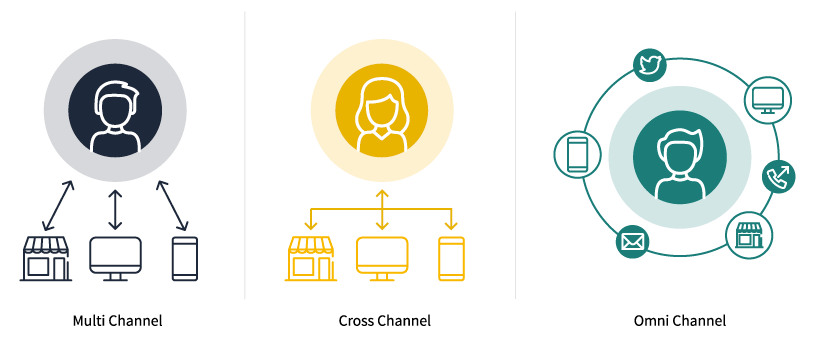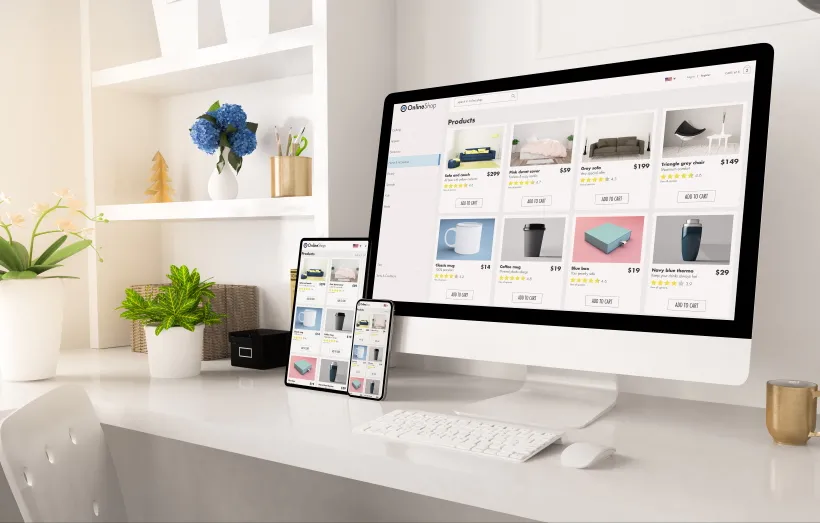Why digital asset management is essential for successful omni-channel marketing
Omni-channel marketing is one of the buzzwords of the moment. But what does it actually mean? What is the difference to multi-channel marketing? What are the advantages of an omni-channel marketing strategy for companies? This article provides answers to these questions and shows how the use of digital asset management software can support the omni-channel strategy.
Multi-channel, cross-channel or omni-channel - what are the differences?
Multi-channel marketing means that a company uses several communication and sales channels to reach existing and potential customers. These channels are used side by side to provide information and messages but are not linked to each other.
Cross-channel marketing can be seen as a further development of multi-channel marketing. Here, the boundaries between different channels are removed. The "click and collect" concept, for example, combines online and offline sales.
The most modern form of a multiple-channel strategy is omni-channel marketing. The goal of omni-channel marketing is to reach existing and potential customers along the customer journey (from the initial search for information to the conclusion of the purchase) and to send a consistent brand message. In doing so, the customer is picked up individually at every touchpoint at which he meets the brand. The entire customer experience should therefore be designed to be as harmonious and personalized as possible, and the channels should be coordinated with each other. While multi-channel marketing focuses on the channels to be used, omni-channel marketing focuses on the customers and their needs along their customer journey.
Why ist omni-channel-marketing important?
The Corona pandemic has changed the consumer behavior of many people. Studies show that customers' expectations of brands and companies have increased. Customers expect a personalized and consistent customer experience and that their service, sales, and communication needs are addressed➚.
At the same time, the pandemic is also having a strong impact on media usage: more and more channels are being consumed on different devices. It is becoming increasingly difficult for companies to address people and reach them individually at as many touchpoints of the customer journey as possible➚. Not only B2C companies feel this development, but also B2B companies see omni-channel marketing and sales as the new marketing standard in 2021➚.
Personalization and good omni-channel marketing lead to higher customer satisfaction and retention rates. Companies that rely on multiple marketing and sales channels achieve a higher sales rate as a result➚. Customers are also willing to spend more money for a good shopping experience➚.
What are the challenges of an omni-channel-strategy?
Companies that opt for an omni-channel marketing strategy should definitely keep their target group in mind: Which channels does the target group increasingly use and which of these channels should therefore be prioritized in a customer-centric strategy? For a consistent brand and shopping experience across all channels and along the customer journey, each individual channel needs a lot of management.
One and the same visual usually needs to be adapted individually for each channel: For example, a print ad requires a higher resolution and a different color model than a display ad on the web. In addition, there are different text variants and formats, so that there are usually a lot of files for one campaign.
If, in addition to the company's own website, social media and offline activities, other multipliers and sales opportunities such as marketplaces and retailers are also integrated, it is essential to create a brand image that is as consistent as possible. To achieve this, partners and retailers must always be provided with the latest data and information. This is the only way to ensure that the company's own products are presented identically across all channels and that customers perceive the brand positively.
Digital asset management simplifies unified brand experience
Digital Asset Management (DAM) software addresses these challenges by centralizing all content. Instead of being distributed across multiple servers, platforms and local computers, all files are stored in the DAM, structured and enriched with metadata (additional information attached to the files). As a result, they can be retrieved much more quickly. In addition, each user only has access to the files that are relevant to them. The DAM thus serves as a central content hub for distribution to all channels and partners.
Automatic conversion and distribution through the DAM system
DAM software not only provides a centralized storage location but can also take care of converting files to the appropriate size and format. This can be automated, as well as the distribution of these versions to the various channels.
Lean processes through integration into the system landscape
Processes can be significantly streamlined through comprehensive integration into the system landscape. Linking the DAM system and the Product Information Management (PIM) system, for example, ensures that each system has the same data status of product information and that changes are adopted directly.
We would like to show you how you can take your omni-channel marketing to the next level with a DAM system during an individual consultation.


